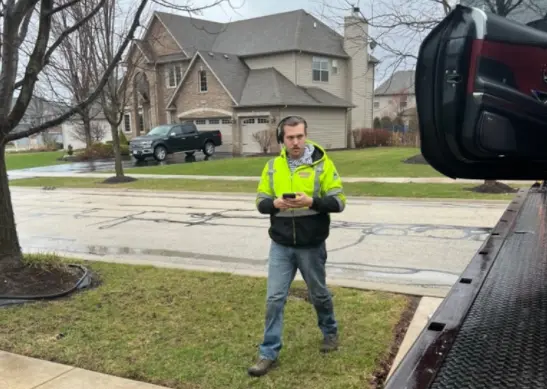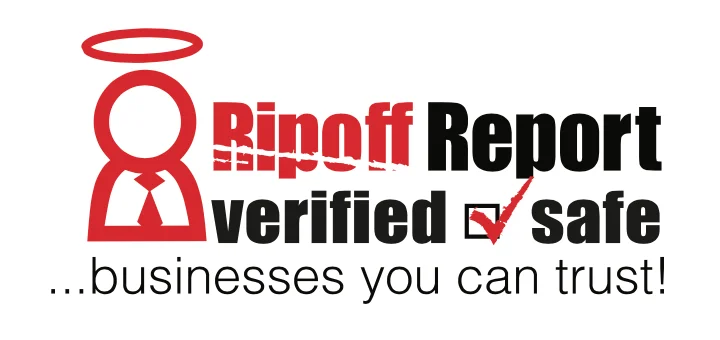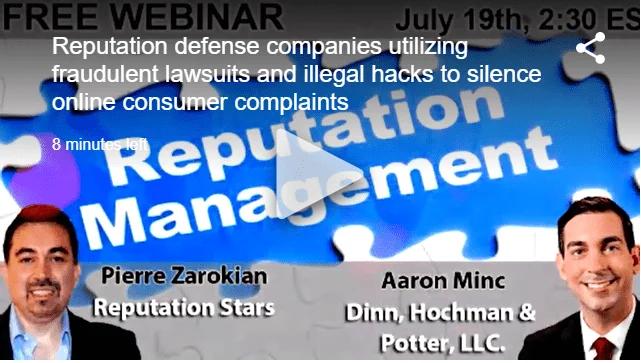Complaint Review: Fuel Freedom International - Altamonte Springs Florida
- Fuel Freedom International 650 Douglas Ave. Suite 1040 Altamonte Springs, Florida U.S.A.
- Phone: 407-682-0060
- Web:
- Category: Corrupt Companies
Fuel Freedom International ripoff no product no refund Altamonte Springs Florida
*Consumer Comment: No, Jonard, it doesn't!...I can absolutely guarantee it. FYI...Ted was a contibutor on this thread!
*Consumer Suggestion: Who's Ted?
*Consumer Suggestion: Cutting through the hype..An open challenge to Ted the FFI founder!
*Consumer Suggestion: Thomas hit the nail on the head..SNAKE OIL at its best!
*Consumer Comment: oxygen sensor again
*Consumer Suggestion: The oxygen senspr
*UPDATE Employee: saving the environment
*Consumer Comment: I love these snake oil catfights.......
*Consumer Comment: I love these snake oil catfights.......
*REBUTTAL Individual responds: REASERCH OR RESEARCH ??
*UPDATE EX-employee responds: ARNIE, ARNIE...ARNIE!
*Consumer Comment: Disappointed with Prof. Patrick Moriarty
*Author of original report: my recent findings of fuel additives and why they will not work
*Author of original report: my recent findings of fuel additives and why they will not work
*Author of original report: my recent findings of fuel additives and why they will not work
*Consumer Comment: PATRICK You can be my HERO
*Consumer Suggestion: Thanx Patrick!
*Author of original report: Another Test Shows A Reduce MPG with MPG-CAPS
*UPDATE Employee: Fuel Freedom International is an honest company and supports all consumers of it's products
*Consumer Comment: SCIENTIFIC TESTING ON MPG-CAPS
*REBUTTAL Owner of company: Rebuttal about FFi and the MPG-CAPS
*REBUTTAL Individual responds: Please tell us why you said that FFI product can help with pollution?
*REBUTTAL Individual responds: Please tell us why you said that FFI product can help with pollution?
*REBUTTAL Individual responds: Please tell us why you said that FFI product can help with pollution?
*REBUTTAL Individual responds: Please tell us why you said that FFI product can help with pollution?
*Author of original report: I Have Now Received A Full Refund From FFI But
*Consumer Suggestion: Nothing more than snake oil..
*Consumer Comment: There are too many positive and first hand testimonials for FFI
listed on other sites?
Those sites steal
Ripoff Report's
content.
We can get those
removed for you!
Find out more here.
Ripoff Report
willing to make a
commitment to
customer satisfaction
Click here now..
I joined FFI on 5/8/06. Paid a total of $256.00. I did not receive my product or start up kit. Then the company took $56.00 out of my checking account on 6/8/06 and still I did not get any product.
I sent notice to the company to cancel my membership due to the inablilty to ship me product. They agreed and refunded the $56.00 but never the $256.00.
So I now filed a complaint to the Florida and Missouri Attorney General. There is already an investigation going on in the State of Florida by the Attorney General. It is listed on their site.
Since the company would not send me any product initially I paid an additional $156.00 to purchase 70 tablets in order to run my own tests before I got too involved in this program during the month of May. I used these 70 tablets to test 7 vehicles in Missouri and California (three gas vehicles and four diesel trucks) according to the FFI instructions. All the test showed an initial improvement but then showed no improvement over a longer period of time and most of them showed less mpg than the vehicles were getting before any usage. This was a controlled test.
The pill sounds good but it did not work for me. There may be a good reason why the pills did not work. I have my suspisions. It may be that it is completely out of the company's control and the answer lies within the vehicles themselves. But the company should certainly be aware of this.
The fact the company takes money and does not deliver product for long periods of time is an indication of cash flow problems (not production problems). The fact the company will not refund money for no product delivery is another red flag.
I was really hoping this company and its product would be a gas saver and allow everyone to make big bucks. But evidently it is not.
Patrick
Saint Charles, Missouri
U.S.A.
This report was posted on Ripoff Report on 06/25/2006 08:18 PM and is a permanent record located here: https://www.ripoffreport.com/reports/fuel-freedom-international/altamonte-springs-florida-32714/fuel-freedom-international-ripoff-no-product-no-refund-altamonte-springs-florida-198149. The posting time indicated is Arizona local time. Arizona does not observe daylight savings so the post time may be Mountain or Pacific depending on the time of year. Ripoff Report has an exclusive license to this report. It may not be copied without the written permission of Ripoff Report. READ: Foreign websites steal our content
If you would like to see more Rip-off Reports on this company/individual, search here:
#28 Consumer Comment
No, Jonard, it doesn't!...I can absolutely guarantee it. FYI...Ted was a contibutor on this thread!
AUTHOR: Steve - (U.S.A.)
SUBMITTED: Friday, October 31, 2008
Jonard,
The power of positive thought can make you get any results you WANT to get.
HOWEVER, from a COMMON SENSE standpoint, I can prove to you that your claim is FALSE.
First of all, there is NOT even ONE, scientific third party test available on this product that shows any benefit at all. I dare you to prove me wrong on this one, and post any alleged study here, with validation and contact info.
Second, from a mechanical standpoint, that '07 Toyota has a complex computer system in it that will automatically and constantly adjust and tune that engine for the best fuel mileage and overall performance possible. [No "magic" pills required].
Third, the automakers are hard pressed by the EPA and various state laws to decrease emissions, and increase MPG at the same time. So, don't you think with the unlimited resources these automakers have available, that they would have already figured this one out? Just common sense [without the MLM hype].
Fourth, as a qualified mechanic, and automotive performance and race enthusiast, I can guarantee to that ANY computer era vehicle does not need ANY additive, AND such additive WILL usually INCREASE emissions, and DECREASE MPG! This is a proven fact. [Many THIRD PARTY / SCIENTIFIC studies available].
**And, in most cases, gadgets and magic pills will actually DAMAGE your engine and/or emissions system. [FACT].
Anyone who actually believes in this stuff is either totally blinded by the MLM hype or is a total moron. Which are you?
>>>
Submitted: 7/4/2008 11:37:27 PM
Modified: 7/5/2008 6:37:12 AM Jonard
Waipahu, Hawaii
U.S.A.
Who's Ted?
Whos is Ted? I thought Randy Ray was the founder of FFI. Anyways, with all this claims about this product doesn't work, can anyone tell me why my '07 Toyota 4runner gets an extra 87 miles while using the MPG-Caps. See...it's easy to say negative things about a product. But when it comes to testimony's about gaining MPG, no one says wow, or hey that's about $24.00 saved on a tank. That's about $1050 per year. Point is, oil prices is not going to go down. The addiction to fuel is a very bad habit. And the more we need it, the more expensive it will get. Try the MPG Caps and use it correctly. Saves you money, it's cost efficient and helps the environment. Thank you. Jonard
>>>
#27 Consumer Suggestion
Who's Ted?
AUTHOR: Jonard - (U.S.A.)
SUBMITTED: Friday, July 04, 2008
Whos is Ted? I thought Randy Ray was the founder of FFI. Anyways, with all this claims about this product doesn't work, can anyone tell me why my '07 Toyota 4runner gets an extra 87 miles while using the MPG-Caps. See...it's easy to say negative things about a product. But when it comes to testimony's about gaining MPG, no one says wow, or hey that's about $24.00 saved on a tank. That's about $1050 per year. Point is, oil prices is not going to go down. The addiction to fuel is a very bad habit. And the more we need it, the more expensive it will get. Try the MPG Caps and use it correctly. Saves you money, it's cost efficient and helps the environment. Thank you. Jonard
#26 Consumer Suggestion
Cutting through the hype..An open challenge to Ted the FFI founder!
AUTHOR: Steve - (U.S.A.)
SUBMITTED: Saturday, January 26, 2008
Ted,
You have made claims that there is "more than sufficient testing" on these caps.
Lets clarify this right now. Remove all smoke and mirrors at this time.
I challenge you to provide me with even 1 INDEPENDENT, third party, SCIENTIFICALLY controlled test on the FFI MPG CAPS.
Post it here.
This is an open challenge to validate your claims.
Failure to do so, validates my claim that you, and your product are a FRAUD.
The ball is in your court!
#25 Consumer Suggestion
Thomas hit the nail on the head..SNAKE OIL at its best!
AUTHOR: Steve - (U.S.A.)
SUBMITTED: Sunday, November 25, 2007
There is no magic pill for MPG increase. Period. Just hype and snake oil, and the potential for a huge liability / class action lawsuit as is the way many MLM's meet their demise.
The FTC along with many state and local laws require that ALL claims made as to the performance of any product be scientifically tested and those results be available to the public. This would be an independent third party test.
Over the past 25 years I have seen these gadgets, potions and pills pop up and then fade away. How about the gas saving magnet that went on the fuel line? Millions were sold, and nobody saved a dime in gas MPG. They are no longer produced or sold as I can see. Just another scam.
The MOST obvious ways to make HUGE MPG increases are the things everyone overlooks! This is what amazes me. I would make a bet that I could pick any 10 of these sheep using this MPG CAP and look at their vehicles and they would be 5-10psi low in air pressure on 1 or more tires, they would be running the wrong [cheap] oil in the car and probably have a dirty air filter too. These things will KILL your MPG, but they go uncorrected every day.
Tips for maximum MPG without falling prey to snake oil scams.
1. Check your tire pressure AT LEAST once per month, as the normal tire will lose up to 5psi per month with heavy use.
2. Change your air filter OFTEN.
3. Change your oil often AND be sure you are using the PROPER grade for your engine and climate. Be sure you use an oil that has the energy conserving logo on it. Many people use oils that are too heavy, and that kills gas mileage and damages your engine. You should use 100% synthetic for best performance.
4. Use your cruise control whenever possible.
And..for the rednecks out there..putting the tailgate down while you drive, DOES NOT save any gas. The airflow DOES NOT hit your tailgate. The way your truck is designed makes the airflow travel far above the tailgate/bed. Engineers already took care of this for you. You don't know more than the engineer, so go back to your trailer park and put that tailgate back up, or reinstall it if needed.
#24 Consumer Comment
oxygen sensor again
AUTHOR: John - (Sweden)
SUBMITTED: Sunday, November 25, 2007
Let me try again.
Given you obtain optimal combustion condition useing MPG, and you have only Co2 entering the exhaust manifold, what then will the sensor signal be, and why? Can Co2 be "lean". If so the voltage signal should drop, trying to increase on fuel.
As we save fuel, as many claim, the computer does not seem to increase on fuel.
And while we theorize, is not CO2 also a cooling agent? What happen Co2 expands in the exhaust manifold? Will that also decrease the exhaust outlet temp?
With the risk of makeing a fool of myself, I think those question should be understood by all who are involved with the product.
I will now run a six monts fuel consuption survey on my car, an Opel Corsa 2003, including an emission test in Mars.
#23 Consumer Suggestion
The oxygen senspr
AUTHOR: John - (Sweden)
SUBMITTED: Wednesday, November 21, 2007
Dear Patrick.
In order to meke sure I understand the oxygen sensor correctly, I would like to ask a couple question.
Giving the MPG cap gives a better combustion and thus less oxygen left in the exhaut, I take it the sensor voltage signal then will drop?
Will the the fuel input then increase?
(I am writing from Sweden, and I mey have a problem understanding it correctly).
Sincerely John
#22 UPDATE Employee
saving the environment
AUTHOR: Vero - (U.S.A.)
SUBMITTED: Monday, April 30, 2007
Prof. Patrick, I joined the company mostly because I wanted to help with the environment, I trully have no time to sponsor people but my sponsor said that would not be a problem.
I really appreciate all the information given, and putting aside the business and the money savings (or not) if the only purpose was to help the environment, is it something that works?
#21 Consumer Comment
I love these snake oil catfights.......
AUTHOR: Thomas - (U.S.A.)
SUBMITTED: Sunday, March 11, 2007
The pseudo-engineering claims are always a hoot to read. Consumer Reports did tests on some fuel-saving junk several years back and found them to be a waste of money and effort. No surprise there.
A 2007 Toyota Camry V6 gets 23 mpg in Consumer Reports real world tests.
A 2007 Toyota Camry L4 gets 24 mpg in Consumer Reports real world tests.
A 2007 Toyota Camry Hybrid gets 34 mpg in Consumer Reports real world tests.
A 2007 Toyota Prius Hybrid gets even better mpg in Consumer Reports real world tests.
The engineers at most auto manufacturers are under the CAFE gun to improve mpg as they increase performance, i.e. lower 0 to 60 mpg times. These engineers would KILL to have a product that could increase mpg by 30%.............
Imagine, a 2007 Toyota Camry V6 would get 30 mpg and also could go 0 to 60 in 6.5 seconds..... I bet Toyota would eagerly build a pill dispenser into the Camry gas tank.
So skip the snake oil and get yourself a hybrid.
#20 Consumer Comment
I love these snake oil catfights.......
AUTHOR: Thomas - (U.S.A.)
SUBMITTED: Sunday, March 11, 2007
The pseudo-engineering claims are always a hoot to read. Consumer Reports did tests on some fuel-saving junk several years back and found them to be a waste of money and effort. No surprise there.
A 2007 Toyota Camry V6 gets 23 mpg in Consumer Reports real world tests.
A 2007 Toyota Camry L4 gets 24 mpg in Consumer Reports real world tests.
A 2007 Toyota Camry Hybrid gets 34 mpg in Consumer Reports real world tests.
A 2007 Toyota Prius Hybrid gets even better mpg in Consumer Reports real world tests.
The engineers at most auto manufacturers are under the CAFE gun to improve mpg as they increase performance, i.e. lower 0 to 60 mpg times. These engineers would KILL to have a product that could increase mpg by 30%.............
Imagine, a 2007 Toyota Camry V6 would get 30 mpg and also could go 0 to 60 in 6.5 seconds..... I bet Toyota would eagerly build a pill dispenser into the Camry gas tank.
So skip the snake oil and get yourself a hybrid.
#19 REBUTTAL Individual responds
REASERCH OR RESEARCH ??
AUTHOR: Pascale - (France)
SUBMITTED: Sunday, March 11, 2007
I visited FFI website : it's written "research" and the report is published with the heading and adress of the institute. What's wrong ?
#18 UPDATE EX-employee responds
ARNIE, ARNIE...ARNIE!
AUTHOR: Patrick - (U.S.A.)
SUBMITTED: Saturday, September 30, 2006
Like most of my students you don't read the intire report and only hear what you are inclined to accept. Your thinking is being guided by the prospect of a money making opportunity. That's OK too! Please don't try to chastise me as a way to support your venture. "The ROI is one year and seven weeks. After that you will save $162.24 each year. YOU have to decide if it is worth it. Is it worth it to save money and protect the environment?"
FIRST: Let's not forget the IMPORTANT point of my initial warning, the FFI company did not pay me my refund due. After, I initiated this report they paid me. THE ISSUE HERE IS THE COMPANY and their credibility. The issue is not one of saving the air quality of the world. If that is your issue, you need to post a different complaint.
SECOND: I give you only the facts as I know them. The decisions and conclusions are left to the reader regardless of their opinion (like yours).
THIRD: I told you in the beginning and all the way through my responses that I hoped it would work. From my testing and conclusions, it does not. Also, from my testing it does reduce emissions. But that is not the point of this complaint posting. Reducing emissions is not the issue. It is the company stating incorrect claims like saving 10, 20, and 30% gas savings when it does not. The company only seems to correct their claims when they are called on the carpet by AG's or by public opinion or by complaints like mine. In other words, in the beginning as long as they could get away with it they would say anything that would help promote sales. NOT A COMPANY I WANT TO BE ASSOCIATED WITH.
FOURTH: I, like you, would like clean breathable air and would like to see your white shirts stay white in Makati and Manila.
FIFTH: You may want to consider supporting alternative fuel sources that offer the world a chance to wean itself from grip of oil and save our precious air from the ozone disintigration that may lie ahead.
You may want to do some research of your own and find out what the characteristics of your gasoline is in your area. You may also want to check if your autos are required to use oxygen sensors. You may find that in your area the product will work. It will not work for gas savings in the US. If it is working for your uncle in California, please post his suppported findings and how he arrived at his positive conclusions. Just make sure his vehicles are not considered to be "GRAY Market Vehicles" which may not have oxygen sensors.
I wish you well in your venture. But your venture and expresion of concerns are not the issue.
#17 Consumer Comment
Disappointed with Prof. Patrick Moriarty
AUTHOR: Arnie - (Philippines)
SUBMITTED: Friday, September 29, 2006
Dear Professor Moriarty,
Thank you for that very detailed and interesting response. I would also like to thank you for your military service to your country and to this world. I have so much respect for people like you and others serving in the military (especially in the U.S.) for you are the real guardians of our individual FREEDOM (yes, including us here in the Philippines).
In as much as I have that respect for you, I am also disappointed. Let me tell you why. At the end of your response, you posed the question whether it is worth to save $163.00 per year. First of all, I am not really sure that we need to install all those equipment that you mentioned because I believe everybody who is using the product and claiming that it is saving them money did not install those extra gears that you discussed. But putting that aside, if I still save $163.00 per year starting on my second year, that is HUGE! Sir, don't you know that $163.00 in my country and in other third world countries feeds a family of 5 for more than 1 month? Do you know that one month salary of a professional nurse here breaking her back helping sick people in the hospital is the equivalent of $150.00 per month? Other professionals here gets paid less than that.
I know in the U.S. which is supposed to be the greatest country in the world have their own poor people. I know that you also have a lot of homeless people on the streets. Don't you think that $163.00 a month if you multiply that by millions of people saving that much would help solve some problems in your own country if they are just kind enough to donate this much of their money (savings)?
Look at it another way. Let's suppose that your total oil importation budget is $1 Billion a month. Let's just say that instead of the 10% that FFi is claiming to save, itis just 1%. Isn't $1 million a month savings good enough to add to your Social Services programs instead of your government raiding your Social Security cofers? I've read that even multi-millionaires value every cent so I hope let's all learn to value $163.00 savings too.
Another point that you have totally missed is the 75% reduction in harmful pollutants to the environment which you agreed to in your earlier blogs. With that alone, don't you think that even without the savings in increased mileage this product is already good enough? Here in the Philippines, and I'm sure in a lot of other countries outside of the U.S.A., it is not recommended to wear white shirts. At the end of the day, you can just see the black particles all over your shirt. If it indeed reduces smog emmission by 75% (in fact they are showing documents up to 100%), isn't that a big help? You know that pollution causes a lot of diseases including cancer (of the lungs) which puts a big burden on the budget of the government. I've heard that China has finished testing the product and they are very plesed with the results. However, they still don't know how to proceed with the business. I'm sure you have your own share of pollution problems in your country and if this product helps in reducing it, your people should start using it.
With this alone, I believe that every responsible citizen should go behind this product! I know you have a lot of whacko crazy environmentalist in your country and I wish they help promoting this product! In fact, every government including yours, should MANDATE the use of this product. That would solve a lot of problems because once you free up some of your budget for your health care, you can put that money in much more productive use. I'm sure you agree with me on this so why don't you get behind it, not for the mileage improvement, but for the reduction in pollution?
My uncle who lives in California sponsored me in this business because he knows how bad the pollution is here in Manila. He says that your pollution in Los Angeles is nothing compared to Manila. But Manila is just one city and most cities in Asia are even worse than Manila. If this product is that good in reducing pollution like you mentioned in your earlier rebuttals, then let us get busy. Forget about the mileage improvement, we have a world to "treat" because this is the only world we have.
One more thing, my uncle drives a BMW and Mercedes and he says that he has been using the product for a month on both cars and changed from Premium grade to regular grade. There was a blog from Robert from Florida who mentioned about "catalyst poisoning". What do you think of that?
Like the Marine that you are, thank you again for "guarding" us from predators although I still believe that Fuel Freedom International have a good product (which you agree) and they are not the enemy. The enemy are the ones trying to shoot down a good company and a good product without any proof and they just spread malicious lies.
Best Regards,
Arnie
P.S.
If you decide to do the business again, it would be an honor for me to sponsor you.
#16 Author of original report
my recent findings of fuel additives and why they will not work
AUTHOR: Patrick - (U.S.A.)
SUBMITTED: Monday, September 25, 2006
TO Arnie ? Makati, Asia Philiphines.
I have several degrees in accounting, management, marketing, and philosophy. I have taught at the college level. I am a decorated Viet-Nam Marine veteran. I spent 20+ years in the automobile industry as a service manager and controller. I was the controller for a Connecticut based dealership conglomerate with 23 auto franchises. I also have spent 30+ years researching and investigating mlm companies.
I have written a 30 page report on my recent findings of fuel additives and why they will not work. I have posted the meat and potatoes of the report in a condense version with no credits given. If you do some research on the net, I am sure you will find me and the report. I have over $1,000+ dollars invested in this MPG program through advertising and marketing and testing the product.
----------
PCM Enterprises
WHY FUEL ADDITIVES DON'T WORK
Report By: Professor Patrick Moriarty
Copyright 2006
INTRODUCTION
During the latter part of 2005 it became evident the cost of automobile fuel was
increasing rapidly and would probably continue to rise at a steady pace. Natural disasters and world events will continue to drive the cost of oil upward.
As one's pocket book begins to feel the pinch it is only natural for some to look at alternatives. And others will try almost anything that promises to increase gas mileage by 10, 20, and even 30 percent thus reducing their cost at the gas pump. This is a perfect time for those witch oil peddlers to raise their ugly heads. Scores of new products have surfaced; fuel catalyst, gas patches, gas pills, and others. Their promises of increased mpg will make you feel like a fool if you don't try it.
THEY DON'T WORK! But wait? your car's computer system may be the reason they don't work. Will explain later. And you may be able to correct
this.
This report looks at the late model cars made after 1995 and explains why no matter how good these products are promoted to be they most probably will not work over the long run.
This report was created to give the reader information. Not to convince the reader to use fuel additives or not to use them. There are some in the automobile service industry who will make a general statement like, ?If there was something that would improve gas mileage the auto makers would jump on it.? And there were many who thought the world was flat too!
If something works to increase mpg, let's use it. If it is suppose to work and it doesn't, then let's find out why!
THE TEST
In May of 2006, Professor Moriarty was approach by a very good friend to join a multi-level-marketing program which the main product was a gas pill formulated to increase miles per gallon. There were many testimonies asserting the success of the product. This venture sounded promising. The company's premise was their pill coated the combustion chamber and made the fuel burn more efficiently thus resulting in an increase in mpg. And certainly a big side effect of the efficient fuel burning was lower emissions and cleaner air. The company did not initially send any product. They stated a spike in growth was the reason and production was not able to keep up with demand.
This sounded real good. So Product was purchased from other members in order to test the product. Testers were solicited via and controlling factors. The test results started coming in during the first week of June. A statistical mean mpg was established before testing the vehicles. Each vehicle showed similar results. Almost immediately there was a noticeable increase in power and pep of the vehicle.
Then the mpg increased by 10, 20, and even 30 percent. However, by the third fill up the mpg started to roller coaster up and down and then leveled. The end result was a new statistical mean mpg right above or right below the original mpg statistical mean. The company's response to no improvement in mpg is to state there are many factors that could cause this; weather, driver, driving environment, the type of gas used, and the way the tank was filled. The weather, driver, driving environment, and the type of gas used were dismissed in the equation because the mean statistical mpg average would neutralize their effect. However, the way the tank was filled was problematic. One may not reach the same level filling the tank each time but this too would be neutralized over a long period of time. However in the short run it could affect the results one way or the other.
To control this problem we instituted the following:
1. The same driver must drive all the time during the testing period.
2. The same gas station and the same pump should be used when possible.
3. The gallons pumped would be recorded when the pump automatically was triggered off. Then the tank would be capped off until the driver could see gas in the neck and the gallons pumped would be recorded.
4. The difference in the two figures would be calculated and used as an adjustment gage if necessary.
Two of the test vehicles received emission testing. The results showed the following:
1. Each vehicle showed an improvement in power. This improvement remained
constant during the test period.
2. Each vehicle showed an initial improvement of mpg but then a steady decline in mpg with further use of the product during the test period.
3. Each of the two emission tested vehicles showed a decline in emissions remained constant during the test period.
Exhaust Pollutants
Hydrocarbons (HC): Hydrocarbon emissions result when fuel
molecules in the engine do not burn or burn only partially. Hydrocarbons
react in the presence of nitrogen oxides and sunlight to form ground-level
ozone, a major component of smog. Ozone irritates the eyes, damages the
lungs, and aggravates respiratory problems. It is our most widespread and
intractable urban air pollution problem. A number of exhaust
hydrocarbons are also toxic, with the potential to cause cancer.
Nitrogen oxides (NOx): Under the high pressure and temperature
conditions in an engine, nitrogen and oxygen atoms in the air react to form
various nitrogen oxides, collectively known as NOx. Nitrogen oxides, like
hydrocarbons, are precursors to the formation of ozone. They also
contribute to the formation of acid rain.
Carbon monoxide (CO): Carbon monoxide is a product of incomplete combustion and occurs when carbon in the fuel is partially oxidized rather than fully oxidized to carbon dioxide. Carbon monoxide reduces the flow of oxygen in the bloodstream and is particularly dangerous to persons with heart disease.
Carbon dioxide (CO2): In recent years, the U.S. Environmental Protection Agency has started to view carbon dioxide, a product of "perfect" combustion, as a pollution concern. Carbon dioxide does not directly impair human health, but it is a "greenhouse gas" that traps the earth's heat and contributes to the potential for global warming. Evaporative Emissions
Hydrocarbon pollutants also escape into the air through fuel evaporation. With today's efficient exhaust emission controls and modern gasoline formulations, evaporative losses can account for a majority of the total hydrocarbon pollution from current model cars on hot days when ozone levels are highest. Evaporative emissions occur several ways:
Diurnal: Gasoline evaporation increases as the temperature rises during the day, heating the fuel tank and venting gasoline vapors.
Running Losses: The hot engine and exhaust system can vaporize gasoline when the car is running.
Hot Soak: The engine remains hot for a period of time after the car is
turned off, and gasoline evaporation continues when the car is parked.
Refueling: Gasoline vapors are always present in fuel tanks. These
vapors are forced out when the tank is filled with liquid fuel.
Federal standards dictate how much pollution autos may emit, and automakers decide how to achieve the pollution limits. The emission reductions of the 1970's came about because of fundamental improvements in engine design, plus the addition of charcoal canisters to collect hydrocarbon vapors and exhaust gas re-circulation valves to reduce nitrogen oxides. The advent of "first generation" catalytic converters in 1975 significantly reduced hydrocarbon and carbon monoxide emissions. The use of catalytic converters provided a huge indirect benefit as well. Because lead inactivates the catalyst, 1975 saw the widespread introduction of unleaded gasoline. This resulted in dramatic reductions in
ambient lead levels and alleviated many serious environmental and human health
concerns associated with lead pollution.
The next major milestone in vehicle emission control technology came in 1980-81. In response to tighter standards, manufacturers equipped new cars with even more sophisticated emission control systems. These systems generally include a new catalyst, plus an on board computer and oxygen sensor. This equipment helps optimize the efficiency of the catalytic converter. Efforts by government and industry, since 1970, have greatly reduced typical vehicle emissions. Since then, however, the number of miles we drive has more than doubled. The increase in travel has offset much of the emission control progress.
So the results showed the product worked and didn't work. Since all three major benefits were proven to work and only one of the major benefits (mpg) eventually had a negative effect after continued testing, it was surmised something in the vehicle was affecting the testing. After some additional research the problem pointed to the vehicle's oxygen sensor and a possible way to correct this and make the fuel additives effective.
THE OXYGEN SENSOR
The oxygen sensor monitors the level of oxygen (O2) in the exhaust so an
onboard computer can regulate the air/fuel mixture to reduce emissions. The
sensor is mounted in the exhaust manifold and generates a voltage signal
proportional to the amount of oxygen in the exhaust. The sensing element on
99% of all oxygen sensors in use is a zirconium ceramic bulb coated on both
sides with a thin layer of platinum. The outside of the bulb is exposed to the hot exhaust gases, while the inside of the bulb is vented internally through the sensor body or wiring to the outside atmosphere. Most cars after 1995 will have two oxygen sensors. When the air/fuel mixture is different from the established parameters in the onboard computer the oxygen sensor goes to work. The difference in oxygen levels across the sensing element generates a voltage through the sensor's platinum electrodes: typically 0.8 to 0.9 volts when the air/fuel mixture is rich. When the air/fuel mixture is lean and there is more oxygen in the exhaust, the sensor's voltage drops to 0.1 to 0.3 volts. When the air/fuel mixture is balanced and combustion is cleanest, the sensor's output voltage is around 0.45 volts.
The oxygen sensor's voltage signal is monitored by the onboard engine management computer and then regulates the fuel mixture. When the computer sees a rich signal (high voltage) from the O2 sensor, it commands the fuel mixture to go lean. When the computer receives a lean signal (low voltage) from the O2 sensor, it commands the fuel mixture to go rich. Cycling back and forth from rich to lean averages out the overall air/fuel mixture to minimize emissions and to help the catalytic converter operate at peak efficiency (which is necessary to reduce hydrocarbon (HC), carbon monoxide (CO) and oxides of nitrogen (NOX) levels even further). The speed with which the oxygen sensor reacts to oxygen changes in the exhaust is very important for accurate fuel control, peak fuel economy, and low emissions.
The air/fuel mixture in an older carbureted engine doesn't change as quickly as that in a throttle body fuel-injected application, so response time is less critical. But, in newer engines with multipoint fuel injection, the air/fuel mixture can change extremely fast, requiring a very quick response from the o2 sensor. So the main culprit has now been discovered? the oxygen sensor. Can this be corrected in order to make fuel additives work? Yes!
Electronic Fuel Injection Enhancer
In researching this problem it was concluded that Eagle-Research had the
best solution in aiding fuel additives to work to their potential. In the past, fuel savers would not work when applied to fuel injection because fuel injection systems are actually designed to prevent efficient combustion!
Increasing the combustion efficiency of an engine increases the exhaust oxygen percentage. Most fuel injection engines use an oxygen sensor to infer the air/fuel ratio of the engine, the increased oxygen content in the exhaust is 'read' by the computer to be a lean mixture in the engine.
The computer then adds extra fuel to bring the pollution back to 'normal'. This problem led to the development of the Electronic Fuel Injection Enhancer (EFIE, pronounced Ee-Fy). The EFIE allows you to apply an offset to the voltage coming from the oxygen sensor, so your vehicle's computer is completely unaware that the oxygen
content of the exhaust has increased. Eagle-Research has the EFIE manual, which explains exactly how to build an EFIE using parts from a Radio Shack.
The manual also completely details oxygen sensor function and why the EFIE works. Your Fuel injection system stays original. Note: The cost of buying the components to build your own EFIE is usually greater than just buying the already assembled circuit from Eagle-Research. DISCLAIMER: Installation of an Electronic Fuel Injection Enhancer may or may not void your vehicle warranty. You should check your vehicle manual or contact the manufacturer before installing any product that would over-ride or enhance original equipment.
Return On Investment Fuel Savers EFIE device. Now that we have discovered a solution to make our fuel additive work to its potential, let's calculate if it will be cost effective by determining how long it will take to recover the initial cost. We will assume the following:
1. Cost of purchasing two EIFE systems????..$120
2. Cost of installation of EIFE systems?????$ 60
3. Cost of Fuel Additive (MPG-Caps) each???.$ 2
4. The first two fill ups uses two caplets each.??.$ 4
5. Vehicle is driven 200 miles each week.
6. Vehicle is filled up weekly.
7. Vehicle is capped when filling up.
8. Beginning average mpg before product is 25 mpg.
9. Product produces an increase of mpg by 15 percent.
10. The cost of gas is $3.00 per gallon.
Prior to using the fuel additive our cost on the fill up is $24.00. The first tank two caplets are used and the results are the 15% increase to 28.75 mpg. The fill up is $20.88 plus $4.00 for the caplets on the first two fill ups. After the first two fill ups the cost is $20.88 plus $2.00 for the caplets. Eighty-eight cents for each of the first two fill ups is now added to our cost. The total cost needed to recoup is $181.76.
On the third fill up there is now a savings of $3.12. At this rate it will take 59 additional fill ups to break even on the initial investment. The ROI is one year and seven weeks. After that you will save $162.24 each year. You have to decide if it is worth it. Is it worth it to save money and protect the environment?
This report does not endorse any fuel additives. However, if you want a fuel additive to work you will have to condition your vehicle. You may find that even after the conditioning some fuel additives or engine conditioners still won't work.
#15 Author of original report
my recent findings of fuel additives and why they will not work
AUTHOR: Patrick - (U.S.A.)
SUBMITTED: Monday, September 25, 2006
TO Arnie ? Makati, Asia Philiphines.
I have several degrees in accounting, management, marketing, and philosophy. I have taught at the college level. I am a decorated Viet-Nam Marine veteran. I spent 20+ years in the automobile industry as a service manager and controller. I was the controller for a Connecticut based dealership conglomerate with 23 auto franchises. I also have spent 30+ years researching and investigating mlm companies.
I have written a 30 page report on my recent findings of fuel additives and why they will not work. I have posted the meat and potatoes of the report in a condense version with no credits given. If you do some research on the net, I am sure you will find me and the report. I have over $1,000+ dollars invested in this MPG program through advertising and marketing and testing the product.
----------
PCM Enterprises
WHY FUEL ADDITIVES DON'T WORK
Report By: Professor Patrick Moriarty
Copyright 2006
INTRODUCTION
During the latter part of 2005 it became evident the cost of automobile fuel was
increasing rapidly and would probably continue to rise at a steady pace. Natural disasters and world events will continue to drive the cost of oil upward.
As one's pocket book begins to feel the pinch it is only natural for some to look at alternatives. And others will try almost anything that promises to increase gas mileage by 10, 20, and even 30 percent thus reducing their cost at the gas pump. This is a perfect time for those witch oil peddlers to raise their ugly heads. Scores of new products have surfaced; fuel catalyst, gas patches, gas pills, and others. Their promises of increased mpg will make you feel like a fool if you don't try it.
THEY DON'T WORK! But wait? your car's computer system may be the reason they don't work. Will explain later. And you may be able to correct
this.
This report looks at the late model cars made after 1995 and explains why no matter how good these products are promoted to be they most probably will not work over the long run.
This report was created to give the reader information. Not to convince the reader to use fuel additives or not to use them. There are some in the automobile service industry who will make a general statement like, ?If there was something that would improve gas mileage the auto makers would jump on it.? And there were many who thought the world was flat too!
If something works to increase mpg, let's use it. If it is suppose to work and it doesn't, then let's find out why!
THE TEST
In May of 2006, Professor Moriarty was approach by a very good friend to join a multi-level-marketing program which the main product was a gas pill formulated to increase miles per gallon. There were many testimonies asserting the success of the product. This venture sounded promising. The company's premise was their pill coated the combustion chamber and made the fuel burn more efficiently thus resulting in an increase in mpg. And certainly a big side effect of the efficient fuel burning was lower emissions and cleaner air. The company did not initially send any product. They stated a spike in growth was the reason and production was not able to keep up with demand.
This sounded real good. So Product was purchased from other members in order to test the product. Testers were solicited via and controlling factors. The test results started coming in during the first week of June. A statistical mean mpg was established before testing the vehicles. Each vehicle showed similar results. Almost immediately there was a noticeable increase in power and pep of the vehicle.
Then the mpg increased by 10, 20, and even 30 percent. However, by the third fill up the mpg started to roller coaster up and down and then leveled. The end result was a new statistical mean mpg right above or right below the original mpg statistical mean. The company's response to no improvement in mpg is to state there are many factors that could cause this; weather, driver, driving environment, the type of gas used, and the way the tank was filled. The weather, driver, driving environment, and the type of gas used were dismissed in the equation because the mean statistical mpg average would neutralize their effect. However, the way the tank was filled was problematic. One may not reach the same level filling the tank each time but this too would be neutralized over a long period of time. However in the short run it could affect the results one way or the other.
To control this problem we instituted the following:
1. The same driver must drive all the time during the testing period.
2. The same gas station and the same pump should be used when possible.
3. The gallons pumped would be recorded when the pump automatically was triggered off. Then the tank would be capped off until the driver could see gas in the neck and the gallons pumped would be recorded.
4. The difference in the two figures would be calculated and used as an adjustment gage if necessary.
Two of the test vehicles received emission testing. The results showed the following:
1. Each vehicle showed an improvement in power. This improvement remained
constant during the test period.
2. Each vehicle showed an initial improvement of mpg but then a steady decline in mpg with further use of the product during the test period.
3. Each of the two emission tested vehicles showed a decline in emissions remained constant during the test period.
Exhaust Pollutants
Hydrocarbons (HC): Hydrocarbon emissions result when fuel
molecules in the engine do not burn or burn only partially. Hydrocarbons
react in the presence of nitrogen oxides and sunlight to form ground-level
ozone, a major component of smog. Ozone irritates the eyes, damages the
lungs, and aggravates respiratory problems. It is our most widespread and
intractable urban air pollution problem. A number of exhaust
hydrocarbons are also toxic, with the potential to cause cancer.
Nitrogen oxides (NOx): Under the high pressure and temperature
conditions in an engine, nitrogen and oxygen atoms in the air react to form
various nitrogen oxides, collectively known as NOx. Nitrogen oxides, like
hydrocarbons, are precursors to the formation of ozone. They also
contribute to the formation of acid rain.
Carbon monoxide (CO): Carbon monoxide is a product of incomplete combustion and occurs when carbon in the fuel is partially oxidized rather than fully oxidized to carbon dioxide. Carbon monoxide reduces the flow of oxygen in the bloodstream and is particularly dangerous to persons with heart disease.
Carbon dioxide (CO2): In recent years, the U.S. Environmental Protection Agency has started to view carbon dioxide, a product of "perfect" combustion, as a pollution concern. Carbon dioxide does not directly impair human health, but it is a "greenhouse gas" that traps the earth's heat and contributes to the potential for global warming. Evaporative Emissions
Hydrocarbon pollutants also escape into the air through fuel evaporation. With today's efficient exhaust emission controls and modern gasoline formulations, evaporative losses can account for a majority of the total hydrocarbon pollution from current model cars on hot days when ozone levels are highest. Evaporative emissions occur several ways:
Diurnal: Gasoline evaporation increases as the temperature rises during the day, heating the fuel tank and venting gasoline vapors.
Running Losses: The hot engine and exhaust system can vaporize gasoline when the car is running.
Hot Soak: The engine remains hot for a period of time after the car is
turned off, and gasoline evaporation continues when the car is parked.
Refueling: Gasoline vapors are always present in fuel tanks. These
vapors are forced out when the tank is filled with liquid fuel.
Federal standards dictate how much pollution autos may emit, and automakers decide how to achieve the pollution limits. The emission reductions of the 1970's came about because of fundamental improvements in engine design, plus the addition of charcoal canisters to collect hydrocarbon vapors and exhaust gas re-circulation valves to reduce nitrogen oxides. The advent of "first generation" catalytic converters in 1975 significantly reduced hydrocarbon and carbon monoxide emissions. The use of catalytic converters provided a huge indirect benefit as well. Because lead inactivates the catalyst, 1975 saw the widespread introduction of unleaded gasoline. This resulted in dramatic reductions in
ambient lead levels and alleviated many serious environmental and human health
concerns associated with lead pollution.
The next major milestone in vehicle emission control technology came in 1980-81. In response to tighter standards, manufacturers equipped new cars with even more sophisticated emission control systems. These systems generally include a new catalyst, plus an on board computer and oxygen sensor. This equipment helps optimize the efficiency of the catalytic converter. Efforts by government and industry, since 1970, have greatly reduced typical vehicle emissions. Since then, however, the number of miles we drive has more than doubled. The increase in travel has offset much of the emission control progress.
So the results showed the product worked and didn't work. Since all three major benefits were proven to work and only one of the major benefits (mpg) eventually had a negative effect after continued testing, it was surmised something in the vehicle was affecting the testing. After some additional research the problem pointed to the vehicle's oxygen sensor and a possible way to correct this and make the fuel additives effective.
THE OXYGEN SENSOR
The oxygen sensor monitors the level of oxygen (O2) in the exhaust so an
onboard computer can regulate the air/fuel mixture to reduce emissions. The
sensor is mounted in the exhaust manifold and generates a voltage signal
proportional to the amount of oxygen in the exhaust. The sensing element on
99% of all oxygen sensors in use is a zirconium ceramic bulb coated on both
sides with a thin layer of platinum. The outside of the bulb is exposed to the hot exhaust gases, while the inside of the bulb is vented internally through the sensor body or wiring to the outside atmosphere. Most cars after 1995 will have two oxygen sensors. When the air/fuel mixture is different from the established parameters in the onboard computer the oxygen sensor goes to work. The difference in oxygen levels across the sensing element generates a voltage through the sensor's platinum electrodes: typically 0.8 to 0.9 volts when the air/fuel mixture is rich. When the air/fuel mixture is lean and there is more oxygen in the exhaust, the sensor's voltage drops to 0.1 to 0.3 volts. When the air/fuel mixture is balanced and combustion is cleanest, the sensor's output voltage is around 0.45 volts.
The oxygen sensor's voltage signal is monitored by the onboard engine management computer and then regulates the fuel mixture. When the computer sees a rich signal (high voltage) from the O2 sensor, it commands the fuel mixture to go lean. When the computer receives a lean signal (low voltage) from the O2 sensor, it commands the fuel mixture to go rich. Cycling back and forth from rich to lean averages out the overall air/fuel mixture to minimize emissions and to help the catalytic converter operate at peak efficiency (which is necessary to reduce hydrocarbon (HC), carbon monoxide (CO) and oxides of nitrogen (NOX) levels even further). The speed with which the oxygen sensor reacts to oxygen changes in the exhaust is very important for accurate fuel control, peak fuel economy, and low emissions.
The air/fuel mixture in an older carbureted engine doesn't change as quickly as that in a throttle body fuel-injected application, so response time is less critical. But, in newer engines with multipoint fuel injection, the air/fuel mixture can change extremely fast, requiring a very quick response from the o2 sensor. So the main culprit has now been discovered? the oxygen sensor. Can this be corrected in order to make fuel additives work? Yes!
Electronic Fuel Injection Enhancer
In researching this problem it was concluded that Eagle-Research had the
best solution in aiding fuel additives to work to their potential. In the past, fuel savers would not work when applied to fuel injection because fuel injection systems are actually designed to prevent efficient combustion!
Increasing the combustion efficiency of an engine increases the exhaust oxygen percentage. Most fuel injection engines use an oxygen sensor to infer the air/fuel ratio of the engine, the increased oxygen content in the exhaust is 'read' by the computer to be a lean mixture in the engine.
The computer then adds extra fuel to bring the pollution back to 'normal'. This problem led to the development of the Electronic Fuel Injection Enhancer (EFIE, pronounced Ee-Fy). The EFIE allows you to apply an offset to the voltage coming from the oxygen sensor, so your vehicle's computer is completely unaware that the oxygen
content of the exhaust has increased. Eagle-Research has the EFIE manual, which explains exactly how to build an EFIE using parts from a Radio Shack.
The manual also completely details oxygen sensor function and why the EFIE works. Your Fuel injection system stays original. Note: The cost of buying the components to build your own EFIE is usually greater than just buying the already assembled circuit from Eagle-Research. DISCLAIMER: Installation of an Electronic Fuel Injection Enhancer may or may not void your vehicle warranty. You should check your vehicle manual or contact the manufacturer before installing any product that would over-ride or enhance original equipment.
Return On Investment Fuel Savers EFIE device. Now that we have discovered a solution to make our fuel additive work to its potential, let's calculate if it will be cost effective by determining how long it will take to recover the initial cost. We will assume the following:
1. Cost of purchasing two EIFE systems????..$120
2. Cost of installation of EIFE systems?????$ 60
3. Cost of Fuel Additive (MPG-Caps) each???.$ 2
4. The first two fill ups uses two caplets each.??.$ 4
5. Vehicle is driven 200 miles each week.
6. Vehicle is filled up weekly.
7. Vehicle is capped when filling up.
8. Beginning average mpg before product is 25 mpg.
9. Product produces an increase of mpg by 15 percent.
10. The cost of gas is $3.00 per gallon.
Prior to using the fuel additive our cost on the fill up is $24.00. The first tank two caplets are used and the results are the 15% increase to 28.75 mpg. The fill up is $20.88 plus $4.00 for the caplets on the first two fill ups. After the first two fill ups the cost is $20.88 plus $2.00 for the caplets. Eighty-eight cents for each of the first two fill ups is now added to our cost. The total cost needed to recoup is $181.76.
On the third fill up there is now a savings of $3.12. At this rate it will take 59 additional fill ups to break even on the initial investment. The ROI is one year and seven weeks. After that you will save $162.24 each year. You have to decide if it is worth it. Is it worth it to save money and protect the environment?
This report does not endorse any fuel additives. However, if you want a fuel additive to work you will have to condition your vehicle. You may find that even after the conditioning some fuel additives or engine conditioners still won't work.
#14 Author of original report
my recent findings of fuel additives and why they will not work
AUTHOR: Patrick - (U.S.A.)
SUBMITTED: Monday, September 25, 2006
TO Arnie ? Makati, Asia Philiphines.
I have several degrees in accounting, management, marketing, and philosophy. I have taught at the college level. I am a decorated Viet-Nam Marine veteran. I spent 20+ years in the automobile industry as a service manager and controller. I was the controller for a Connecticut based dealership conglomerate with 23 auto franchises. I also have spent 30+ years researching and investigating mlm companies.
I have written a 30 page report on my recent findings of fuel additives and why they will not work. I have posted the meat and potatoes of the report in a condense version with no credits given. If you do some research on the net, I am sure you will find me and the report. I have over $1,000+ dollars invested in this MPG program through advertising and marketing and testing the product.
----------
PCM Enterprises
WHY FUEL ADDITIVES DON'T WORK
Report By: Professor Patrick Moriarty
Copyright 2006
INTRODUCTION
During the latter part of 2005 it became evident the cost of automobile fuel was
increasing rapidly and would probably continue to rise at a steady pace. Natural disasters and world events will continue to drive the cost of oil upward.
As one's pocket book begins to feel the pinch it is only natural for some to look at alternatives. And others will try almost anything that promises to increase gas mileage by 10, 20, and even 30 percent thus reducing their cost at the gas pump. This is a perfect time for those witch oil peddlers to raise their ugly heads. Scores of new products have surfaced; fuel catalyst, gas patches, gas pills, and others. Their promises of increased mpg will make you feel like a fool if you don't try it.
THEY DON'T WORK! But wait? your car's computer system may be the reason they don't work. Will explain later. And you may be able to correct
this.
This report looks at the late model cars made after 1995 and explains why no matter how good these products are promoted to be they most probably will not work over the long run.
This report was created to give the reader information. Not to convince the reader to use fuel additives or not to use them. There are some in the automobile service industry who will make a general statement like, ?If there was something that would improve gas mileage the auto makers would jump on it.? And there were many who thought the world was flat too!
If something works to increase mpg, let's use it. If it is suppose to work and it doesn't, then let's find out why!
THE TEST
In May of 2006, Professor Moriarty was approach by a very good friend to join a multi-level-marketing program which the main product was a gas pill formulated to increase miles per gallon. There were many testimonies asserting the success of the product. This venture sounded promising. The company's premise was their pill coated the combustion chamber and made the fuel burn more efficiently thus resulting in an increase in mpg. And certainly a big side effect of the efficient fuel burning was lower emissions and cleaner air. The company did not initially send any product. They stated a spike in growth was the reason and production was not able to keep up with demand.
This sounded real good. So Product was purchased from other members in order to test the product. Testers were solicited via and controlling factors. The test results started coming in during the first week of June. A statistical mean mpg was established before testing the vehicles. Each vehicle showed similar results. Almost immediately there was a noticeable increase in power and pep of the vehicle.
Then the mpg increased by 10, 20, and even 30 percent. However, by the third fill up the mpg started to roller coaster up and down and then leveled. The end result was a new statistical mean mpg right above or right below the original mpg statistical mean. The company's response to no improvement in mpg is to state there are many factors that could cause this; weather, driver, driving environment, the type of gas used, and the way the tank was filled. The weather, driver, driving environment, and the type of gas used were dismissed in the equation because the mean statistical mpg average would neutralize their effect. However, the way the tank was filled was problematic. One may not reach the same level filling the tank each time but this too would be neutralized over a long period of time. However in the short run it could affect the results one way or the other.
To control this problem we instituted the following:
1. The same driver must drive all the time during the testing period.
2. The same gas station and the same pump should be used when possible.
3. The gallons pumped would be recorded when the pump automatically was triggered off. Then the tank would be capped off until the driver could see gas in the neck and the gallons pumped would be recorded.
4. The difference in the two figures would be calculated and used as an adjustment gage if necessary.
Two of the test vehicles received emission testing. The results showed the following:
1. Each vehicle showed an improvement in power. This improvement remained
constant during the test period.
2. Each vehicle showed an initial improvement of mpg but then a steady decline in mpg with further use of the product during the test period.
3. Each of the two emission tested vehicles showed a decline in emissions remained constant during the test period.
Exhaust Pollutants
Hydrocarbons (HC): Hydrocarbon emissions result when fuel
molecules in the engine do not burn or burn only partially. Hydrocarbons
react in the presence of nitrogen oxides and sunlight to form ground-level
ozone, a major component of smog. Ozone irritates the eyes, damages the
lungs, and aggravates respiratory problems. It is our most widespread and
intractable urban air pollution problem. A number of exhaust
hydrocarbons are also toxic, with the potential to cause cancer.
Nitrogen oxides (NOx): Under the high pressure and temperature
conditions in an engine, nitrogen and oxygen atoms in the air react to form
various nitrogen oxides, collectively known as NOx. Nitrogen oxides, like
hydrocarbons, are precursors to the formation of ozone. They also
contribute to the formation of acid rain.
Carbon monoxide (CO): Carbon monoxide is a product of incomplete combustion and occurs when carbon in the fuel is partially oxidized rather than fully oxidized to carbon dioxide. Carbon monoxide reduces the flow of oxygen in the bloodstream and is particularly dangerous to persons with heart disease.
Carbon dioxide (CO2): In recent years, the U.S. Environmental Protection Agency has started to view carbon dioxide, a product of "perfect" combustion, as a pollution concern. Carbon dioxide does not directly impair human health, but it is a "greenhouse gas" that traps the earth's heat and contributes to the potential for global warming. Evaporative Emissions
Hydrocarbon pollutants also escape into the air through fuel evaporation. With today's efficient exhaust emission controls and modern gasoline formulations, evaporative losses can account for a majority of the total hydrocarbon pollution from current model cars on hot days when ozone levels are highest. Evaporative emissions occur several ways:
Diurnal: Gasoline evaporation increases as the temperature rises during the day, heating the fuel tank and venting gasoline vapors.
Running Losses: The hot engine and exhaust system can vaporize gasoline when the car is running.
Hot Soak: The engine remains hot for a period of time after the car is
turned off, and gasoline evaporation continues when the car is parked.
Refueling: Gasoline vapors are always present in fuel tanks. These
vapors are forced out when the tank is filled with liquid fuel.
Federal standards dictate how much pollution autos may emit, and automakers decide how to achieve the pollution limits. The emission reductions of the 1970's came about because of fundamental improvements in engine design, plus the addition of charcoal canisters to collect hydrocarbon vapors and exhaust gas re-circulation valves to reduce nitrogen oxides. The advent of "first generation" catalytic converters in 1975 significantly reduced hydrocarbon and carbon monoxide emissions. The use of catalytic converters provided a huge indirect benefit as well. Because lead inactivates the catalyst, 1975 saw the widespread introduction of unleaded gasoline. This resulted in dramatic reductions in
ambient lead levels and alleviated many serious environmental and human health
concerns associated with lead pollution.
The next major milestone in vehicle emission control technology came in 1980-81. In response to tighter standards, manufacturers equipped new cars with even more sophisticated emission control systems. These systems generally include a new catalyst, plus an on board computer and oxygen sensor. This equipment helps optimize the efficiency of the catalytic converter. Efforts by government and industry, since 1970, have greatly reduced typical vehicle emissions. Since then, however, the number of miles we drive has more than doubled. The increase in travel has offset much of the emission control progress.
So the results showed the product worked and didn't work. Since all three major benefits were proven to work and only one of the major benefits (mpg) eventually had a negative effect after continued testing, it was surmised something in the vehicle was affecting the testing. After some additional research the problem pointed to the vehicle's oxygen sensor and a possible way to correct this and make the fuel additives effective.
THE OXYGEN SENSOR
The oxygen sensor monitors the level of oxygen (O2) in the exhaust so an
onboard computer can regulate the air/fuel mixture to reduce emissions. The
sensor is mounted in the exhaust manifold and generates a voltage signal
proportional to the amount of oxygen in the exhaust. The sensing element on
99% of all oxygen sensors in use is a zirconium ceramic bulb coated on both
sides with a thin layer of platinum. The outside of the bulb is exposed to the hot exhaust gases, while the inside of the bulb is vented internally through the sensor body or wiring to the outside atmosphere. Most cars after 1995 will have two oxygen sensors. When the air/fuel mixture is different from the established parameters in the onboard computer the oxygen sensor goes to work. The difference in oxygen levels across the sensing element generates a voltage through the sensor's platinum electrodes: typically 0.8 to 0.9 volts when the air/fuel mixture is rich. When the air/fuel mixture is lean and there is more oxygen in the exhaust, the sensor's voltage drops to 0.1 to 0.3 volts. When the air/fuel mixture is balanced and combustion is cleanest, the sensor's output voltage is around 0.45 volts.
The oxygen sensor's voltage signal is monitored by the onboard engine management computer and then regulates the fuel mixture. When the computer sees a rich signal (high voltage) from the O2 sensor, it commands the fuel mixture to go lean. When the computer receives a lean signal (low voltage) from the O2 sensor, it commands the fuel mixture to go rich. Cycling back and forth from rich to lean averages out the overall air/fuel mixture to minimize emissions and to help the catalytic converter operate at peak efficiency (which is necessary to reduce hydrocarbon (HC), carbon monoxide (CO) and oxides of nitrogen (NOX) levels even further). The speed with which the oxygen sensor reacts to oxygen changes in the exhaust is very important for accurate fuel control, peak fuel economy, and low emissions.
The air/fuel mixture in an older carbureted engine doesn't change as quickly as that in a throttle body fuel-injected application, so response time is less critical. But, in newer engines with multipoint fuel injection, the air/fuel mixture can change extremely fast, requiring a very quick response from the o2 sensor. So the main culprit has now been discovered? the oxygen sensor. Can this be corrected in order to make fuel additives work? Yes!
Electronic Fuel Injection Enhancer
In researching this problem it was concluded that Eagle-Research had the
best solution in aiding fuel additives to work to their potential. In the past, fuel savers would not work when applied to fuel injection because fuel injection systems are actually designed to prevent efficient combustion!
Increasing the combustion efficiency of an engine increases the exhaust oxygen percentage. Most fuel injection engines use an oxygen sensor to infer the air/fuel ratio of the engine, the increased oxygen content in the exhaust is 'read' by the computer to be a lean mixture in the engine.
The computer then adds extra fuel to bring the pollution back to 'normal'. This problem led to the development of the Electronic Fuel Injection Enhancer (EFIE, pronounced Ee-Fy). The EFIE allows you to apply an offset to the voltage coming from the oxygen sensor, so your vehicle's computer is completely unaware that the oxygen
content of the exhaust has increased. Eagle-Research has the EFIE manual, which explains exactly how to build an EFIE using parts from a Radio Shack.
The manual also completely details oxygen sensor function and why the EFIE works. Your Fuel injection system stays original. Note: The cost of buying the components to build your own EFIE is usually greater than just buying the already assembled circuit from Eagle-Research. DISCLAIMER: Installation of an Electronic Fuel Injection Enhancer may or may not void your vehicle warranty. You should check your vehicle manual or contact the manufacturer before installing any product that would over-ride or enhance original equipment.
Return On Investment Fuel Savers EFIE device. Now that we have discovered a solution to make our fuel additive work to its potential, let's calculate if it will be cost effective by determining how long it will take to recover the initial cost. We will assume the following:
1. Cost of purchasing two EIFE systems????..$120
2. Cost of installation of EIFE systems?????$ 60
3. Cost of Fuel Additive (MPG-Caps) each???.$ 2
4. The first two fill ups uses two caplets each.??.$ 4
5. Vehicle is driven 200 miles each week.
6. Vehicle is filled up weekly.
7. Vehicle is capped when filling up.
8. Beginning average mpg before product is 25 mpg.
9. Product produces an increase of mpg by 15 percent.
10. The cost of gas is $3.00 per gallon.
Prior to using the fuel additive our cost on the fill up is $24.00. The first tank two caplets are used and the results are the 15% increase to 28.75 mpg. The fill up is $20.88 plus $4.00 for the caplets on the first two fill ups. After the first two fill ups the cost is $20.88 plus $2.00 for the caplets. Eighty-eight cents for each of the first two fill ups is now added to our cost. The total cost needed to recoup is $181.76.
On the third fill up there is now a savings of $3.12. At this rate it will take 59 additional fill ups to break even on the initial investment. The ROI is one year and seven weeks. After that you will save $162.24 each year. You have to decide if it is worth it. Is it worth it to save money and protect the environment?
This report does not endorse any fuel additives. However, if you want a fuel additive to work you will have to condition your vehicle. You may find that even after the conditioning some fuel additives or engine conditioners still won't work.
#13 Consumer Comment
PATRICK You can be my HERO
AUTHOR: Arnie - (Philippines)
SUBMITTED: Tuesday, September 19, 2006
Too bad I just saw your website now, a week after I signed up as an independent distributor. This is interesting and I would like to learn more before I can do more damage to myself and to other people.
Anyway, and in fairness to Mr. Jerry Lang, could you tell me and the rest of the audience your qualifications so I can make a smart decision on who I should beleive and what I need to do next? Also, could you also publish a more detailed and more professional report like what Mr. Lang published on the website of FFI? I also noticed that from Mr. Lang's detailed report, he tested with a 1998 Mercedes S-320. I saw the old report regarding 1995 cars which like you mentioned showed mileage improvement but inside that report, there was also the result from a newer car, a 2005 Nissan Maxima that gained an 11.4% in mileage using the MPG Boost which is another product from FFI.
I would also like to know why hasn't the Attorney General in Florida shut down the bsiness? Everybody knows that the Attorney General in Texas has shut down BioPerformance and BioPerformance started later than FFI. I think BioPerformance started in Dec 2005 and FFI in Nov 2005 but BP was shut down in May after only 5 months of operation while FFI is growing stronger. Could it be that the Attorney Genral in Texas is smarter and more aggressive than the Attorney General in Florida? I am aware that there is an investigation being done by the AG in Florida but so far has not come up with anything after several months. Also, why would the management of FFI post in their website regarding BioPerformance shut down by the Texas AG? Is it maybe to warn us that the company might be shut down too by Florida's AG or are they sending a message to us, their distributors, not to worry because they are a legitimate MLM with a good product that works, unlike BioPerformance which had a bad product and clearly a pyramid scheme? What do you think?
Regarding your sidekick's comment (PRIVATE?) that there is no Southwest Reaserch Institute, that was so smart of him to notice that mis-spelling. I took another look at the website again and it is still misspelled "Reasearch" but when I opened their report, the report looks very professional printed on their own letter head! To be honest, I don't know how to interpret their analysis report. Can you help?
It is too bad that a little misspelling hindered Mr. Private from pursuing the business but it is his choice to remain a Private forever, instead of becoming a General or at least a Colonel, if you know what I mean. It is too bad that a 4% increase in mileage from un unscientific testing from "unbiased" ABC is not good enough for Mr. Private. I hope he is generous enough to share with us all the result of his "research of the company and the disturbing things" he found out. He is probably smarter and has more resources to do a detailed and expensive investigation than the Attorney General of Florida and I would really love to read his report instead of just printing some insinuations. Be a man, Private.
#12 Consumer Suggestion
Thanx Patrick!
AUTHOR: Private - (U.S.A.)
SUBMITTED: Tuesday, September 05, 2006
Patrick,
I read your report about Fuel Freedom International, (FFI,) and I agree that this company is a Rip-Off, Fraud, and a Fake.
In fact, I did some research on this company, (after reading your report,) and I did notice some disturbing things.
First of all, they claimed to have independent testing by Southwest Reaserch Institute did you notice the misspelling? You see, there is no Southwest Reaserch Institute. There is a Southwest Research Institute and they never heard of FFI or their Gas Pill.
Another fact: ABC news did an expose on FFI and guess what they said? FFI is a fake! In fact the American Automobile Association tested FFI's Gas Pill and guess what happened? Nothing! No Fuel Mileage Improvement what-so-ever!
Patrick, if you have any left over, why don't you do a little experiment with the Gas Pill? Take a clear glass jar put some gas in it, then put the Gas Pill in and put the lid on and see what happens to the pill and to the gas?
Does the pill dissolve? Does the color of the gasoline change?
Can this company provide the NASA link that proves that NASA uses this product?
If it does such a great job why doesn't British Petroleum use it at the refinery? Think about it, BP could then claim that there gas gets 10%, 20% or 30% better fuel mileage performance than Shell's gasoline I guess that won't happen BP found out that they could make more money manipulating the stock market, so why worry about a Rip-Off Gas Pill from FFI?
Patrick, too many sites show that the product is a rip-off do you suppose that they will refund your money now?
Thank you for warning us about this scam product!
#11 Author of original report
Another Test Shows A Reduce MPG with MPG-CAPS
AUTHOR: Patrick - (U.S.A.)
SUBMITTED: Tuesday, September 05, 2006
I am the originator of this report. This past August I conducted a test on a 30,000 pound diesel truck used in a moving company. The test trip was over 3,000 miles and used over 400 gallons of fuel. The results were similar to what I have seen before. The truck received a slight decrease in mpg of about .75 of a gallon less.
I have gone to the FFI website and have read their new reports issued by them. The first one states the vehicles which received an increase in mpg were older cars that used leaded gas. This is exactly what this product was invented to do. And I am glad it did. However, it has not worked on unleaded later model vehicles.
I take issue to Mr Lang's report. He never mentioned the oxygen sensor on his vehicle. The oxygen sensor will prevent the vehicle from achieving increase gas mileage. It is hooked up to the vehicle's computer and will make sure the vehicles will receive a specific burn. If it does not, it will adjust the amount of fuel you use. You cannot get away from it unless you trick the oxygen sensor. That can be done at an additional cost. Doing so may also cancel any existing warranty on the vehicle.
I have no ax to grind with this product or the company. I wish it did work. But in my opinion it does not.
#10 UPDATE Employee
Fuel Freedom International is an honest company and supports all consumers of it's products
AUTHOR: Randy - (U.S.A.)
SUBMITTED: Saturday, August 26, 2006
Fuel Freedom International, LLC (FFI) has always made refunds to anyone that requested a refund. We are an MLM company that pays commissions on product sales. Distributors that join can build a sales team to sell our products and commissions can be earned from the total sales in your organization.
During the summer of 2006 we did suffer a delay in products from our manufacturer because of our rapid growth; however, we have caught up on all shipments worldwide, and are shipping product within 24-48 hours of receipt of orders. Some people get nervous about ordering from a company that they don't know first-hand; however, we have always had a 100% money-back gurantee on our products.
The product works exceedingly well and test results confirm our claims. Check our website for test results from SouthWest Labs, Jerry Lang and others. Other test results are being added monthly.
#9 Consumer Comment
SCIENTIFIC TESTING ON MPG-CAPS
AUTHOR: J - (U.S.A.)
SUBMITTED: Monday, July 17, 2006
I've been testing MPG-CAPS for about a month now on two cars and after three gas fill-ups I still cannot figure out if i'm saving gas or not. There are so many variables involved in doing these kinds of test and consumers cannot simply do this on their own. All I can tell is that my cars have experienced some sort of increase in power and lower carbon emissions but to tell you if i've actually saved 15%-30% on gas like a lot of people say? I really doubt it.
Can't FFI just pay for an official scientific test on it's product just so they can prove once and for all that the product does actually work?
#8 REBUTTAL Owner of company
Rebuttal about FFi and the MPG-CAPS
AUTHOR: Ted - (U.S.A.)
SUBMITTED: Sunday, July 16, 2006
July 16, 2006 @ 6:52AM
I'm a Founding member of FFI. As with any new product that comes out, there are many skeptical people who will find anything wrong with any product before they have fully tested the product as a hole.
The inventor of this product has a 37 year history working with the MPG-CAPS. The product was a liquid originally and was reformulated to its current state "the MPG-CAPS".
There is more than sufficient testing that has been done on this product at this point to show the product does work as advertised. As with any product, regardless of how many people use it, some people will not get results they are looking for, for a number of reasons that have nothing to do with the product but does have to do with, in this case how people drive and that is the most significant variable that changes from fill up to fill up, using the MPG-CAPS.
If the product doesn't work, then how is it that over 25,000,000 miles have already been driven in hundreds of cars worldwide with much success, and in fact is being used in over 90 countries worldwide since November 2005 when the MPG-CAPS hit the market. As to the problems with cars that are newer than 1995, explain how it is that so many people are using this product on just such vehicles and seeing results that are greater than the Manufacturer states the vehicle should be getting results, yet that is exactly what happens. Are there issues that come up? Yes there are but when addressed to the company, they are addressed by the company but not by the company providing a blanket statement.
Can it be that thousands upon thousands of people using the MPG-CAPS "have closed eyes" or is it that this products works as advertised and the thousands of testimonials are all FAKE. I don't think so.
Yes, as more use of the product is done, and more and more results are sent into the company byy users of the product, completely independently, and tabulated by the company, more understanding will occur with any issues that come up concerning the MPG-CAPS, both negatively and positively.
There is "no guarantee of income" any person will make when they joing FFi as an Independent Sales Representative. There are potential but all based on the work of each person and the work of their sponsors. There is "NO FREE LUNCH"! You are rewarded on your efforts, not your talk. Successful people who are legitimately working MLM and DIRECT MARKETING have integrity and honesty and don't over promise. Yes, there are a lot of RIP OFF artists in MLM and DIRECT MARKETING. There are also a lot of legitimate people as well.
It is important to understand that until any person does a 100-120 gallon legitimate test of the MPG-CAPS, any results aren't valid. This is because it takes this long to get a vaild reading of how the vehicle performs over a legitimate test, provided people use the product as instructed. There is "NO SILVER BULLET".
The company has a 100% money back guarantee, even if you have already used the product. They also have a "bonified" Liability Insurance Policy on the product, where if anyone can show that the MPG-CAPS has been shown to do damage to any vehicle, the company will pay for the repair. I think that says a lot about the integrity of the company.
As for the issue of testing for new vehicles since 1995, there are continuing and ongoing tests being done and reported by users of the MPG-CAPS, as more and more people use this product on all makes and models, regardless of the year the vehicle is produced.
If people encounter a problem, they notify the company's compliance departement and the issue is addressed to the inventor of the MPG-CAPS, who has invested over 37 years in this product.
Sincerely,
T. Wacholtz
Boothbay, ME
#7 REBUTTAL Individual responds
Please tell us why you said that FFI product can help with pollution?
AUTHOR: Michael - (U.S.A.)
SUBMITTED: Saturday, July 15, 2006
I am a little confused. Can you tell me why and how you can make thia statement please. " I am personally willing to support their claim it will reduce emisions which is very good to the environment from my own studies."
This is a very important statement and fact. If indeed, your test showed that FFI's MPG-CAPs will reduce emission and help the environment, then you could possible understand why this product is different from all the ones on the market and these are gas additives and modifiers. FFI's caplets works as a combustion chamber conditioner. I have seen many smog check reports that showed the effect of this product on HC level. The hydrocarbon coming out of the tailpipe is close to zero or in many cases zero. Why and what does this means? Cleaner and more effective burn. What could this mean? Increase horse power and so mileage, etc. It is pretty obvious and you are giving that statement.
I also read about the writeup on 1995 or the time when lead is taken out, I believe. The fact remains that the product was develop before that time and has been used since 70s but governmental agencies and even NASA in the rocket booster.
I cannot speak for anyone else, but I am making my judgement on the product not because I am blind or affected by the income. It is not enough for me to risk my reputation which is priceless.
Many people will ask "If it is this good, why didn't the gas company put that into the gas?" There are many things that are good and still the main stream companies still did not want to incorporate into their product or services. Example, we alll know (including the water supply companies) that our city water if full of harmful materials, chemicals, pariculates, etc. Why don't they provide better filtration before coming to our house? I can cite example after example. Yes, if vitamins are good for us, why it is not put into our milk, our water, etc. I even have heard stories that the oil company will buy any gas saving devices for cars and then put the project on the shelf to kill it - like a special carburator some years back. Some inventors and business people prefer to use mlm marketing method becasue it has been proven to be effective. Books and classes by Harvard professors and other universities teach mlm these days. So to say the mlm are all bad is not correct any longer. We need to be more selective.
In regard to the investigation of FFI by Florida, I can give you what I learned. A couple of months ago, a shady gas pill mlm company called "BP" in short, was shut down by Florida's DA office because their product really does not work and their plans are like what the other gentelman said, "pyramid" with very lucrative pay out. When they were being shut down, they also finger point FFI asking for a investigation on FFI. If you will learn more about the FFi plan, it requires the distributor to have at least 3 retail sales a month for him to get the full recuriting bonus. It is not just a head and number game like the other gentleman was saying. Any investigation on any companies, big or small, is just an investigation and it is the DA office's responsibility to protect the consumer. I like that. So, how did you complain to the DA's office and on what ground? Did you tell them you got the refund? What did they telll you? Please share with us. If I buy something on TV, it will take 8 weeks for me to get it if I am lucky. Your sponsor should have told you that FFI is growing too fast and you will not get your product for 4-6 weeks. They are catching up with the new high production machine. It is getting later. More later.
Just a side comment. The software on autoship or taking out additonal $56 for your monthly purchase is to let you have the qualification to get residual income as binaary commission. You can opt not to do that if you do not want to generate income till later. However, you are not the only one complaining about this. People do not like any company to take out any more money without even receiving the original product package. Again, you could choose, if you know, not to do the autoship till later.
#6 REBUTTAL Individual responds
Please tell us why you said that FFI product can help with pollution?
AUTHOR: Michael - (U.S.A.)
SUBMITTED: Saturday, July 15, 2006
I am a little confused. Can you tell me why and how you can make thia statement please. " I am personally willing to support their claim it will reduce emisions which is very good to the environment from my own studies."
This is a very important statement and fact. If indeed, your test showed that FFI's MPG-CAPs will reduce emission and help the environment, then you could possible understand why this product is different from all the ones on the market and these are gas additives and modifiers. FFI's caplets works as a combustion chamber conditioner. I have seen many smog check reports that showed the effect of this product on HC level. The hydrocarbon coming out of the tailpipe is close to zero or in many cases zero. Why and what does this means? Cleaner and more effective burn. What could this mean? Increase horse power and so mileage, etc. It is pretty obvious and you are giving that statement.
I also read about the writeup on 1995 or the time when lead is taken out, I believe. The fact remains that the product was develop before that time and has been used since 70s but governmental agencies and even NASA in the rocket booster.
I cannot speak for anyone else, but I am making my judgement on the product not because I am blind or affected by the income. It is not enough for me to risk my reputation which is priceless.
Many people will ask "If it is this good, why didn't the gas company put that into the gas?" There are many things that are good and still the main stream companies still did not want to incorporate into their product or services. Example, we alll know (including the water supply companies) that our city water if full of harmful materials, chemicals, pariculates, etc. Why don't they provide better filtration before coming to our house? I can cite example after example. Yes, if vitamins are good for us, why it is not put into our milk, our water, etc. I even have heard stories that the oil company will buy any gas saving devices for cars and then put the project on the shelf to kill it - like a special carburator some years back. Some inventors and business people prefer to use mlm marketing method becasue it has been proven to be effective. Books and classes by Harvard professors and other universities teach mlm these days. So to say the mlm are all bad is not correct any longer. We need to be more selective.
In regard to the investigation of FFI by Florida, I can give you what I learned. A couple of months ago, a shady gas pill mlm company called "BP" in short, was shut down by Florida's DA office because their product really does not work and their plans are like what the other gentelman said, "pyramid" with very lucrative pay out. When they were being shut down, they also finger point FFI asking for a investigation on FFI. If you will learn more about the FFi plan, it requires the distributor to have at least 3 retail sales a month for him to get the full recuriting bonus. It is not just a head and number game like the other gentleman was saying. Any investigation on any companies, big or small, is just an investigation and it is the DA office's responsibility to protect the consumer. I like that. So, how did you complain to the DA's office and on what ground? Did you tell them you got the refund? What did they telll you? Please share with us. If I buy something on TV, it will take 8 weeks for me to get it if I am lucky. Your sponsor should have told you that FFI is growing too fast and you will not get your product for 4-6 weeks. They are catching up with the new high production machine. It is getting later. More later.
Just a side comment. The software on autoship or taking out additonal $56 for your monthly purchase is to let you have the qualification to get residual income as binaary commission. You can opt not to do that if you do not want to generate income till later. However, you are not the only one complaining about this. People do not like any company to take out any more money without even receiving the original product package. Again, you could choose, if you know, not to do the autoship till later.
#5 REBUTTAL Individual responds
Please tell us why you said that FFI product can help with pollution?
AUTHOR: Michael - (U.S.A.)
SUBMITTED: Saturday, July 15, 2006
I am a little confused. Can you tell me why and how you can make thia statement please. " I am personally willing to support their claim it will reduce emisions which is very good to the environment from my own studies."
This is a very important statement and fact. If indeed, your test showed that FFI's MPG-CAPs will reduce emission and help the environment, then you could possible understand why this product is different from all the ones on the market and these are gas additives and modifiers. FFI's caplets works as a combustion chamber conditioner. I have seen many smog check reports that showed the effect of this product on HC level. The hydrocarbon coming out of the tailpipe is close to zero or in many cases zero. Why and what does this means? Cleaner and more effective burn. What could this mean? Increase horse power and so mileage, etc. It is pretty obvious and you are giving that statement.
I also read about the writeup on 1995 or the time when lead is taken out, I believe. The fact remains that the product was develop before that time and has been used since 70s but governmental agencies and even NASA in the rocket booster.
I cannot speak for anyone else, but I am making my judgement on the product not because I am blind or affected by the income. It is not enough for me to risk my reputation which is priceless.
Many people will ask "If it is this good, why didn't the gas company put that into the gas?" There are many things that are good and still the main stream companies still did not want to incorporate into their product or services. Example, we alll know (including the water supply companies) that our city water if full of harmful materials, chemicals, pariculates, etc. Why don't they provide better filtration before coming to our house? I can cite example after example. Yes, if vitamins are good for us, why it is not put into our milk, our water, etc. I even have heard stories that the oil company will buy any gas saving devices for cars and then put the project on the shelf to kill it - like a special carburator some years back. Some inventors and business people prefer to use mlm marketing method becasue it has been proven to be effective. Books and classes by Harvard professors and other universities teach mlm these days. So to say the mlm are all bad is not correct any longer. We need to be more selective.
In regard to the investigation of FFI by Florida, I can give you what I learned. A couple of months ago, a shady gas pill mlm company called "BP" in short, was shut down by Florida's DA office because their product really does not work and their plans are like what the other gentelman said, "pyramid" with very lucrative pay out. When they were being shut down, they also finger point FFI asking for a investigation on FFI. If you will learn more about the FFi plan, it requires the distributor to have at least 3 retail sales a month for him to get the full recuriting bonus. It is not just a head and number game like the other gentleman was saying. Any investigation on any companies, big or small, is just an investigation and it is the DA office's responsibility to protect the consumer. I like that. So, how did you complain to the DA's office and on what ground? Did you tell them you got the refund? What did they telll you? Please share with us. If I buy something on TV, it will take 8 weeks for me to get it if I am lucky. Your sponsor should have told you that FFI is growing too fast and you will not get your product for 4-6 weeks. They are catching up with the new high production machine. It is getting later. More later.
Just a side comment. The software on autoship or taking out additonal $56 for your monthly purchase is to let you have the qualification to get residual income as binaary commission. You can opt not to do that if you do not want to generate income till later. However, you are not the only one complaining about this. People do not like any company to take out any more money without even receiving the original product package. Again, you could choose, if you know, not to do the autoship till later.
#4 REBUTTAL Individual responds
Please tell us why you said that FFI product can help with pollution?
AUTHOR: Michael - (U.S.A.)
SUBMITTED: Saturday, July 15, 2006
I am a little confused. Can you tell me why and how you can make thia statement please. " I am personally willing to support their claim it will reduce emisions which is very good to the environment from my own studies."
This is a very important statement and fact. If indeed, your test showed that FFI's MPG-CAPs will reduce emission and help the environment, then you could possible understand why this product is different from all the ones on the market and these are gas additives and modifiers. FFI's caplets works as a combustion chamber conditioner. I have seen many smog check reports that showed the effect of this product on HC level. The hydrocarbon coming out of the tailpipe is close to zero or in many cases zero. Why and what does this means? Cleaner and more effective burn. What could this mean? Increase horse power and so mileage, etc. It is pretty obvious and you are giving that statement.
I also read about the writeup on 1995 or the time when lead is taken out, I believe. The fact remains that the product was develop before that time and has been used since 70s but governmental agencies and even NASA in the rocket booster.
I cannot speak for anyone else, but I am making my judgement on the product not because I am blind or affected by the income. It is not enough for me to risk my reputation which is priceless.
Many people will ask "If it is this good, why didn't the gas company put that into the gas?" There are many things that are good and still the main stream companies still did not want to incorporate into their product or services. Example, we alll know (including the water supply companies) that our city water if full of harmful materials, chemicals, pariculates, etc. Why don't they provide better filtration before coming to our house? I can cite example after example. Yes, if vitamins are good for us, why it is not put into our milk, our water, etc. I even have heard stories that the oil company will buy any gas saving devices for cars and then put the project on the shelf to kill it - like a special carburator some years back. Some inventors and business people prefer to use mlm marketing method becasue it has been proven to be effective. Books and classes by Harvard professors and other universities teach mlm these days. So to say the mlm are all bad is not correct any longer. We need to be more selective.
In regard to the investigation of FFI by Florida, I can give you what I learned. A couple of months ago, a shady gas pill mlm company called "BP" in short, was shut down by Florida's DA office because their product really does not work and their plans are like what the other gentelman said, "pyramid" with very lucrative pay out. When they were being shut down, they also finger point FFI asking for a investigation on FFI. If you will learn more about the FFi plan, it requires the distributor to have at least 3 retail sales a month for him to get the full recuriting bonus. It is not just a head and number game like the other gentleman was saying. Any investigation on any companies, big or small, is just an investigation and it is the DA office's responsibility to protect the consumer. I like that. So, how did you complain to the DA's office and on what ground? Did you tell them you got the refund? What did they telll you? Please share with us. If I buy something on TV, it will take 8 weeks for me to get it if I am lucky. Your sponsor should have told you that FFI is growing too fast and you will not get your product for 4-6 weeks. They are catching up with the new high production machine. It is getting later. More later.
Just a side comment. The software on autoship or taking out additonal $56 for your monthly purchase is to let you have the qualification to get residual income as binaary commission. You can opt not to do that if you do not want to generate income till later. However, you are not the only one complaining about this. People do not like any company to take out any more money without even receiving the original product package. Again, you could choose, if you know, not to do the autoship till later.
#3 Author of original report
I Have Now Received A Full Refund From FFI But
AUTHOR: Patrick - (U.S.A.)
SUBMITTED: Monday, July 10, 2006
I am the originator of the Rip-off Report titled "No Product No Refund". I feel it only fair to report that I have now received a complete refund from FFI. It took about a month and many complaint letters to several attorney general's offices and the BBB. The cost of time I invested in trying to get my refund back probably overshadowed the amount I received. But it is about principle and fairness not just money.
I have also continued my research on this product and have found two disturbing factors. The first one is that documentation submitted by the company to several agencies show the product was designed specifically for vehicles prior to 1980 and for the use with leaded gasoline. I am personally willing to support their claim it will reduce emisions which is very good to the environment from my own studies.
Secondly, however, the product will not increase gas mileage over a long and continued use in vehicles made after 1995. Any respected mechanic should be able to tell you why. In fact, you will probably see a decrease in mpg as I did. I have been participating and researching mlm's for over 30 years.
It is very obvious from the company's websites this is a recruiting based venture. I also believe it will be eventially shut down for that reason unless the company changes its approach and discloses the negative aspects of using this product in vehicles made after 1995.
There is definitely a solution to adapting one's vehicle to use this product but it is not without a cost. And I have not as of this date conducted a study on a ROI in regards to this matter.
What remains very peculiar is FFI still has not submited any conclusive studies or reports showing this product will work in vehicles produced after 1995. As in almost all mlm's, most people who have invested in this company have been blinded by the prospect of making money. I am continuing my research on this product and hope to soon have a conclusion on if the product will work after vehicle alterations.
#2 Consumer Suggestion
Nothing more than snake oil..
AUTHOR: Steve - (U.S.A.)
SUBMITTED: Sunday, July 09, 2006
Michael,
The power of positive thought can get you any results you want to get.
However the fact remains that the engineers at the automaker would have the vested interest in maximizing MPG in all cars produced. It is unlikely a company would come out of nowhere and have a magic product.
I have stacks of third party tests on these gadgets, and in most cases they actually degrade performance and/or actually do damage to the vehicle.
MLM is all about hype. And this MLM is all about recruiting other distributors and not the retail sale of product to the end user,which makes it illegal. It is called a pyramid and will, like all the rest, be shut down.
It is a matter of time.
#1 Consumer Comment
There are too many positive and first hand testimonials for FFI
AUTHOR: Michael - (U.S.A.)
SUBMITTED: Sunday, July 09, 2006
Hello,
I will give this same rebuttal for both of these riff-off report on file for FFI. I can understand the frustration of not getting the products faster due to an unexpected 400% growth curve phenomonen and acceptance of this product by 93 countries worldwide.
Let's face it, networking marketing and mlm are getting very popular and many corporate 500 companies also realize the effectiveness of mlm and have choosen to adopt this into their business model. Mlm are there to help millions of people to generate extra to full time income. However, it has gotten a bad name due to many unethical companies. We have to be careful in selecting the right company and product.
It is supposed to have a money back gurantee and so I do not under why you were not given the refund unless there are something else there that I do not know.
I am a chenist and engineer manager in the Chip business for over 25 years in the Silicon Valley. Therefore by education and training, I was skiptical about FFI and its MPG-CAPs from the start; especially there are several other companies with similar claims. However, there are too many testimonials from friends that made me looked into their technology closer and I found out that the FFI product did have a different approach and validate their claims. It is not a fuel additive or fuel conditioner. The MPG-CAPs benefits the engine in two ways: 1. It helps to clean up the carbon deposit within the combustion chamber and then gradually deposit a thin (nano thickness) catalytic coating on the combustion chamber wall. This coating is pinkish in color and will help in a more complete, instantaneous and cleaner burnt of the gasoline hydrycarbon chain molecule.
FFI realized their delivery problem and had taken steps to purchased, installed and debugged a machine in CA. It is now up running, producing about 450,000 caplets or pills an hour or millions of pill a day. This machine will help to reduce product delivery time and keep the worldwide distributors happy.
As far a testimonials are concern, there are just too many to tell and you can get many of them on the website: mmfoundation.myffi.biz. Here are some that are closer to me.
1. I have a 2001 BMW M3 with 333 horsepower and this is a highly tuned and technically superior machine with one coil to each cylinder, etc. I did a control test to check out the claim of using lower octane or regular fuel. I set up the control runs by driving from S. San Franicsco to Cupertino which is about 35 miles - set cruise control at 70, full tank of 91 octane Arco gas ( (recommended by BMW), pick the second fastest lane and at close to midnight. I drove to and back a total of 4 trips and with the very accurate onboard computer, it registered from 27.0-27.3 miles per gallon on the freeway and total on the freeway. Then I added 2 MPG-CAPs to the tank before fillup. I finished this first tank. On the second tank with MPG-CAPs, I filled up with 87 instaed of 91 octane Arco gas. I did the same runs again. Wow, the mileage for these four runs came out exactly the same, 27.0-27.3 mpg., and this was after using one tank of gas with MPG-CAPs. On my second tank with the caps, with the same test runs, I am gaining about 2-3 extra miles per gallon.
I was told that for some cars, you can see the difference within the first tank and for some may take 3-6 tanks.
I have heard many other friends with good results on mileage. But this one on passing smog check is the most compelling. A friend, who has a 20 year old MBZ classic could not pass smog check. He went to three MB dealers and they all told him to rebuild the engine and since S.F. is expensive, he drove the car to Las Vegas to see if it would be cheaper. Well, I think it still would cost him $5000. Then he heard about FFI from his wife, Dr. Bill finally broke down and tried the CAPs. After 3 tanks with the CAPs and for a cost of about 10 dollars, his beloved car passed smog!! Get what, his mechanics all signed up. This is not the only one. I have heard 3 others and including my son's 1990 Jeep Cherokee.
FFI's claim on pollution or exhaust reduction is real. If everyone's car can have a reduction in green house gases, it would make the world a much better place to live for us and for our children. Forget saving money on gas, or making money from this wonderful product. Right now there are people spending $8000 more to get a hybrid car that they will never get their money back. It is the way - the good way to live.
I got to go and will update this later. Yes, if you also put a little effort into the business, you will not only help the environment, but you will have extra income and save money on gas. Hey, you may be able to help many others who needs this product and the financial reward that comes with it.
If I were you, may I suggest that you come back and join FFI again. By the way, I am do FFI not for personal gain but for funding of charity and disabled organizations. I have seen and spent more time in reviewing this opportunity.

Advertisers above have met our
strict standards for business conduct.





































